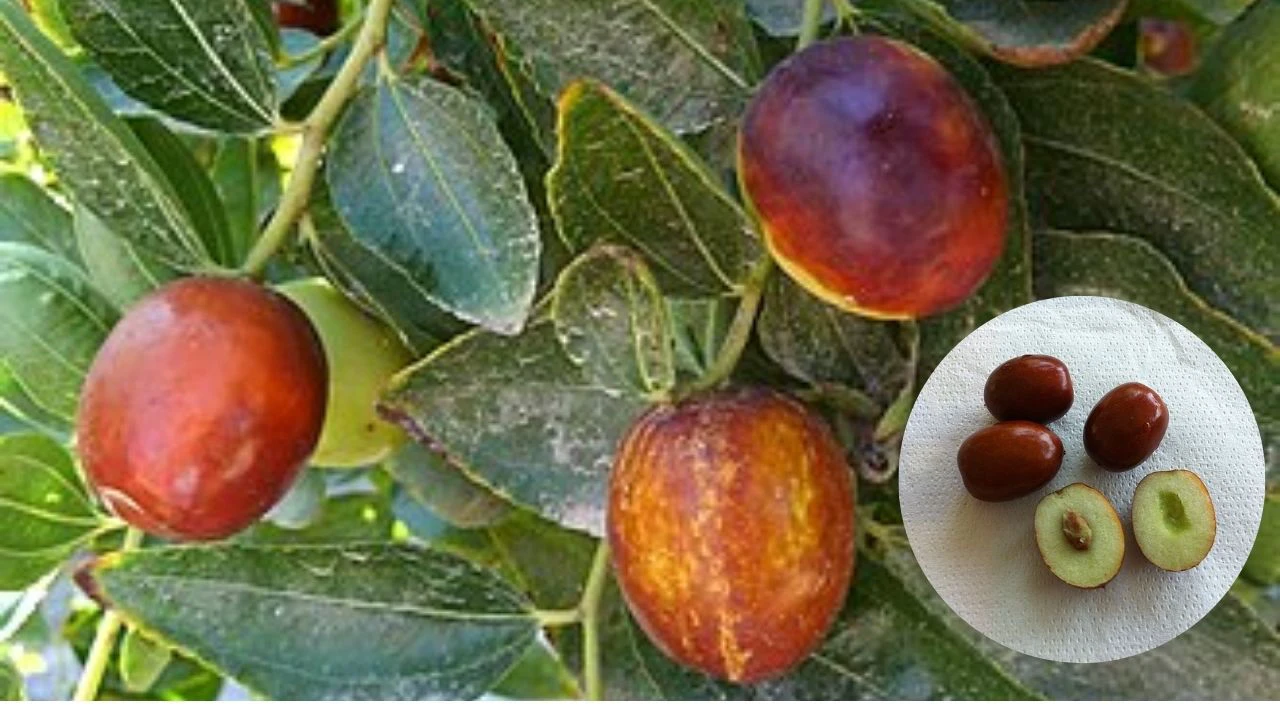Ziziphus jujuba is a multipurpose plant. Its fruits are eaten fresh or dried, used in folk medicine, and even processed into jams and candies. Its leaves feed livestock, its wood serves as fuel and for making tools, and its strong roots help prevent soil erosion. This tree, which thrives on marginal lands with little care, offers an ideal crop for Kashmir’s rainfed, hilly regions that are increasingly facing the brunt of climate change.
Botanical Features and Diversity in Kashmir
In Kashmir, two distinct subspecies of Ziziphus jujuba exist. The wild and more common type is Ziziphus jujuba ssp. spinosa, often thorny with small, less palatable fruits. On the other hand, Ziziphus jujuba ssp. Jujube is a cultivated type that grows into a tall, thornless tree with larger, sweeter fruits. This latter subspecies is now extremely rare in the region, though it was once widely appreciated and grown for its fruit quality and medicinal properties.
During recent explorations in districts like Pulwama, Ganderbal, Pampore, and Shopian, researchers identified a handful of these subspecies. Interestingly, a unique wild accession from Ganderbal shows traits similar to the cultivated jujube. It is moderately thorny plants with large, tasty, shiny fruits that don’t develop a hollow center upon drying. This find could represent a genetic bridge between the wild and cultivated types and offers great potential for future breeding and revival efforts.
Farming Potential and Adaptability
Ziziphus jujuba is highly suited for cultivation on Kashmir’s karewa lands, hilly slopes, and dry rainfed areas where most commercial fruit crops struggle. It can grow at altitudes between 1600-2300 meters and is well adapted to minimal irrigation, making it ideal for farmers with limited water resources. The plants can be grown either from seeds or root suckers, and once established, they require minimal care.
Fruiting occurs between September and October, depending on the variety and altitude. The fruits vary widely in size, taste, and nutritional quality. Some accessions show great promise with fruit weights over 4 grams and excellent flavor. These could be further propagated through community nurseries and encouraged in backyard gardens, orchards, and field boundaries
- Plum is a sweet fruit available around the country. A proper guide for the cultivation of the same include steps…
Nutritional and Medicinal Value
Jujube fruits are a powerhouse of nutrition. They are rich in vitamin C, amino acids, polyphenols, and triterpenic acids. Traditionally, the fruit and other plant parts have been used in Unani and Ayurvedic medicine to treat conditions like respiratory ailments, skin diseases, insomnia, and liver disorders. In Kashmir, decoctions made from the fruits are still used in villages like Uri to treat jaundice, while the leaves are added to bath water to heal skin infections.
This makes jujube not just a food source, but a potent natural remedy with strong roots in local healing traditions. With the growing demand for herbal and functional foods, Ziziphus jujuba can be developed into value-added products like dried fruits, herbal teas, and nutraceuticals.
Community Efforts and the Need for Conservation
At Raqhama village in Shopian, local communities are leading by example. They have fenced off old jujube trees and are nurturing young plants from root suckers. The locals, proud of their heritage, refer to their village as ‘Bre Baag’ meaning the ber orchard. Such grassroots conservation initiatives need to be supported through government and NGO collaboration.
With only a handful of accessions remaining and much of the habitat under threat from urbanization and overgrazing, immediate action is needed. Conservation can be done both in situ (on-site in natural habitat) and ex situ (in research farms and nurseries). Creating awareness among farmers, promoting the economic value of jujube-based products, and distributing high-yielding planting material are essential steps toward revival.
Ziziphus jujuba is more than just a minor fruit. It is a resilient, low-input crop with medicinal, ecological, and economic benefits. In the face of erratic rainfall, shrinking landholdings, and growing interest in native crops, reviving this nearly forgotten tree could be a turning point for sustainable horticulture in Kashmir. Farmers, researchers, and communities must come together to reclaim this gift of nature and pass it on to future generations.
